
|
| Accept Cookies | Customize | Refuse Cookies |
Esph www.juzaphoto.com/p/Esph  |
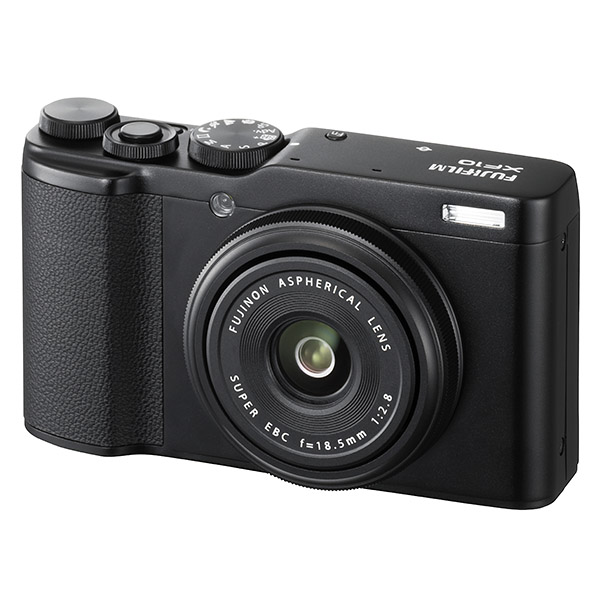 | Fujifilm XF10 Pros: APSC Bayer sensor without low pass filter, 28mm optical exceptional equivalent without the slightest distortion, beautiful colors, amazing rendering, snapshot mode (the dear old hyperfocal), optics that do not pull out when you turn on the camera, very good customization possibilities, very minimal camera but that has everything you need Cons: Light vignette in certain circumcisions, the dial of the full cdi junk mode for amateurs of first hair (sports mode, night, portrait, etc...), touchscreen (should abolish it in the cameras), heavy raws of 43 mb each and no possibility of having them compressed, 24mpx... ebbasta with all megapixel stis, 16 are fine for everything and are already too many for my taste!, lacks the ability to shoot in raw or jpeg in 4:3 format but you can of course get in post production, usually Fuji: too much parcel between film simulations that do not even look like the films of which they bear the names and endless menus... , 35mm crop and 50mm crop only in jpeg and not raw only Opinion: This XF10 is obviously inspired by the famous Ricoh series but offers something different. First of all, let's start by saying that the sensor is not the x-trans, but a normal Bayer 24mpx without anti-aliasing filter, this leads to files full of nuances that recall those of the much-loved CCD sensors. Probably a few less megapixels would have benefited, but the results are really good. I own the Champagne Gold model, and I think in this version it is the most beautiful compact camera ever produced. There is little to do, Fujifilm understands the market and knows how to propose really interesting products winking at both the amateur of first hair and the experienced professional. This compact is the essence: on the one hand we find modes and functions typical of family photo compacts, on the other it pulsates the heart of an APSC sensor combined with a superb optics. Personally I have always been a 50mm photographer, so I have difficulty with a wide-angle like the 28mm, however if there is a chance to approach the results are exceptional. Another similarity to the Ricoh is the snapshot mode (vulgarly called "snapshot" in the manual, although it would be better to "hyperfocal"). This allows only two settings: f8 at 2 meters and f5.6 at 5 meters, the first for close photos, the second for all that is over 1 and a half meters. For everything else there is the excellent Manual mode with the distance scale. Hyperfocal is physical: with a 28mm to 5m away and f5.6 of diaphragm you will always have a fire from one and a half meters to infinity, so you don't need to have 200 pairs of diaphragm and distance eh? ;-) Of course Fujfilm has filled this little tiger with peculiar-attract-amateur, that is, the terrible film simulations that look like everything but the films of which they bear the name. I'm still filming and I can guarantee that they're just marketing crap. However, as with everything we don't care about, just ignore them. It remains an aesthetically spectacular machine, with a fear-and-fear sensor and optics, offering the ability to shoot in raw up to 12,800 iso. I usually assume I shoot above 1600, but this way you can use the snapshot function in virtually any light condition, and this is absolutely not a bad thing! Autofocus, on the other hand, works very well under certain circumstances and shows some uncertainty in others, but I think since I have this machine maybe I've used it a couple of times. I read many who complain about the slowness of the autofocus, some blurry photos... guys, obviously the more a camera has limits the more obvious the limits of the photographer who uses it, it is natural. Paradoxically, the scafato photographer prefers a machine with as few functions as possible to have the ultimate control of the vehicle, while the pixel-peeper will never settle for the thousands of options, features and automations present, and in a short time will switch to the last camera released on the market only to be able to complain again. I remember that to take any photo it is enough that a machine allows the control of diaphragm, shutter and iso. Everything else is game. A big note I make every time I talk about Fujifilm... put it as a standard option to shoot in raw compressed... you can't have eighteen thousand simulations-fuff and shoot in raw at 43mb a file... it's crazy!!! What to say, nowadays the cameras are distinguished by "pro", "prosumer", "consumer"... these are appellations that should probably be used to describe photographers rather than cameras. This XF10, with all its "prosumer" qualities, is the most outstanding there can be for anything from family photos to professional to author's. sent on July 27, 2020 |
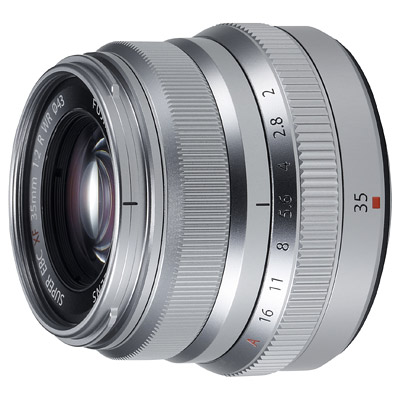 | Fujifilm XF 35mm f/2 R WR Pros: Opening to f2...??? Cons: Character and personality-free as about 95% of Fujifilm digital ml optics, indecent distortion from wide-angle pushed by 30 euros, free of three-dimensionality, free of contrast Opinion: I took with Fujifilm for years also on a professional level, then I moved to Leica. If it is true that good photography can also be done with a compact 50 euros, it is true that there must be pleasure in photographing (since it is not a question of splitting stones). I say that perfection (so sought after in the modern amateur...) is boring. Perfection in photography is a tedious flaw that only leads to long yawns. Having said that I can say that one of the favorite optics is the Simmicron 50mm/2 Rigid, optics far from perfect, but with character to sell. It is a poetic glass, which gives emotions. The opposite is the opposite of about 95% of modern Fujifilm optics. The latter, were conceived more with aesthetic than qualitative benefits. Having been shooting for years with Fujifilm I can say that I rarely had to deal with valid optics. Mostly they are lenses that work when shooting in jpeg, with all internal processor fixes. As soon as you shoot in raw... here comes the donkey. Distortions, lack of contrast, lack of resolution... In short, bottle funds designed exclusively to be processed by the machine. Not to mention the lack of character. Optical without personality, that bore, that make you pass the desire to photograph. And this 35mm is the summary of all these flaws, a trivial optics, which has distortion even if it was an old 24mm stall, of those you buy and use once. I shoot exclusively in raw, if I want to shoot in jpeg I use the mobile phone or the compact. If I use a Fujifilm I want to have total control over the image. After years of digital Leica and film I filmed an XE2s and this 35mm... bà, it made me return the desire for analog, where the final quality is given exclusively by glass and film. sent on June 15, 2020 |
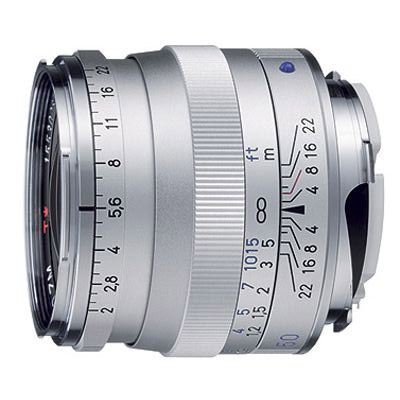 | Zeiss ZM Planar T* 50mm f/2 Pros: Resolve to every diaphragm, bokeh, micro-contrast, plasticity and three-dimensionality of the subjects, construction and optics materials Cons: The aperture ring, miserable plastic lens cap, sometimes excessive contrast to control Opinion: The Zeiss Planar 50mm/2 ZM is one of those optics that leave you dumbfounded. I'm not kidding, so it happened to me. I personally use only the 50mm, so I was looking for my Leica M3 a normal of excellence, that had a good power resolvent on all the aperture, without problems of front/back focus, that had its character and its history. I have always loved the Zeiss lenses, so complex but poetic, with that bokeh sometimes nervous, excessive, that deny a strong and decisive character. I had read that this Planar for Leica M was second only to the APO-Summicron, optics from about 7000 euros, and that far exceeded the previous Summicron. This of course will never change a comma the quality of the photos that we'll shoot, thank God is still the photographer to prejudice this point. But let's go to optics. I start with the negatives. I'm not crazy about the fact that the aperture ring is threaded only in part and therefore is not the maximum comfort in management, and also I would have preferred that it was close to the graft and not around the front glass. But you get used to it, and after a few months the whole thing simply becomes "normal". Let's move on to the countless positives. Shooting at film The result is surprising. This Planar maintains a very high resolvent power consistently on all the diaphragms, so in layman's terms it is of an impressive sharpness. But it is also sweet, delicate, so behind an aggressive character reveals an artistic bokeh made of many bold and refined brushstrokes. And that's exactly what I've always loved about the Zeiss Planar. It is a highly professional perspective that in the right hands becomes a wonderful chisel with which to create magical works. At the opening this Planar gives emotions: slightly close shadows in the outskirts of the frame offering a slight vignetting only where necessary: the areas of light, even if at the edges, will not be touched. This allows for amazing portraits, crepuscular, fascinating. The sharpness is also impressive at the edges (to be clear with a Trix 400 pulled to 1600 ASA you will have an incredible detail). The areas out of focus detach from the subject in a pleasant and homogeneous, breaking only where some element is the impulsive character of this optics, and then will find space the wonderful brushstrokes that I talked about before. The three-dimensionality and plasticity of this optics are at the highest level: In some cases it is expected only that the subject exits the frame. I conclude by advising this point to all those who are looking for a professional glass, that does not make jokes, that guarantees the highest quality at every opening, but that does not overlook the creative and artistic side of the painter who houses in every photographer. Nowadays it is fashionable to fish for poor optics finding "character" where instead there are only aberrations and qualitative limits. The real character is seen in optics like these, optics that bring out the launch character of the photographer. If I were to describe this Zeiss Planar with only one adjective I would say "elegant". Elegant for how it is presented, for its constructive quality and sweetness of use, elegant for its character, a little ' high and noble, elegant for as it allows to tell the world, with its "mood" almost elegiac and brooding. A good photograph needs a good photographer but also good tools: I do not know any creative who uses cheap products when he is dedicated to the creation of his own works. And in photography The discourse does not change. sent on December 22, 2017 |
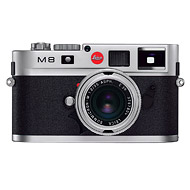 | Leica M8 / M8.2 Pros: Construction, Durability, Simplicity, Rangefinder, User Experience, CCD Sensor, ISO minimum to 160, optical Park, Shutter to 1/8000 seconds, Focus distance with telemtro to 0.7 meters, 10 mpx marvel at and light dng , Ultraviolet filter Thin Cons: rear monitor can not be repaired, automation as automatic ISO and aperture priorities: should abolish Opinion: The M8 is un'analogica that produces digital files. Find gusts hyper fast, batteries that last for thousands of shots, millemila iso, a machine that alone photographer, will be disappointed. Leica This is for people who want to have total control of the vehicle. The rangefinder is pure enjoyment. With such a machine back the urge to photograph for the simple sake of it. If one side loses the FF, which is very unusual in that as the format was invented by Leica, the other probably find ourselves the analog digital company. It is essential, brutally essential, some would say Spartan. It is solid, has a weight that the scale very well with any optical so there shots even at 1/15 of a second without blur. It has no function keys: the ISO is 160, 320, 640, 1250 and 2500. Simply, there is no other. Set to start then do not change, just as was the sensitive film: this thing is wonderful.Where other machines I shot at 2500 ISO with M8 do not pass the 320 ... how is it possible ?? You learn to make good use of the ambient light. Why take pictures means "writing with light" and work at ambient light does not mean looking up iso. You learn to photograph and there is no longer any limit. The M8 CCD sensor returns still images, in 2016, a unique grace. A low ISO is crazy, raising them you can use it easily even at 2500 ISO with no problem (who says otherwise should learn how to properly expose) because the noise is identical to the grain of a tri-x 400 pulled to 1600 and developed well. The detail is everything. Great to have 10 MB file that does not fill you the hd in the space of one day. Also shooting with Fujifilm, which weighs a raw beauty of 40mb for 16mpx ... I 10Mpx the M8 are naturally perfect for everything ... maybe a little 'Pochini for those who post on Facebook or ... 500px: DrnLa M8 has a very thin ultraviolet filter and this leads to a slight magenta cast. The colori are warm, enveloping, autumn, white and black turns into a thousand shades of gray. Combined at the Kodak CCD and little optical contrast that can be mounted bring the M8 to have a dynamic range is difficult to reach from any of the latest generation FF. The files are full, loads of detail, thanks to the dedicated optical park and formed by the top of the top: top Leica, Zeiss and Voigtlander. The Zeiss are those for Leica M, not those af products in recent years which have lost 70% of optical character ... Even the cheapest glass is still something that any user would not even know reflex imagine. This is a fact. rnOltre the loss of the traditional 35mm camera "Leica", the shutter is quite noisy. Paradox of paradoxes for a Leica. In compensation is the only all those produced for 50 years until now to have the ability to take to 1/8000 of a second. rnIl display is essential, and this is wonderful: I could take no more and ugrave; labyrinthine menu where you found everything and more apart from what you need to photograph. No video (Thank God !!!), nothing effettazzi from Instagram or anything. With the M8 we photographers, we do not do altro.rnIn an age where everyone take pictures but few photography, the Leica M8 is a magical tool. That of M8 - and this applies to almost all Leica - is a brooding photograph, made of long took a deep breath, silences, arguments, of neurons that work and work. but every Leica can also become a real lightning war if used well. It is a pure and true means of expression. sent on May 20, 2016 |
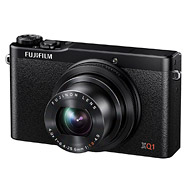 | Fujifilm XQ1 Pros: really tiny sensor X-trans, jpeg very good, workable raw, jpeg acceptable up to iso really high and adjustable aperture through the ring optics, robust body and elegant Metal shell, a user customization mode C, wifi, maximum brightness 1.8 .... Cons: ... Which tends to decrease almost immediately until you get to 4.9 !, lack ND filter, customization commands very limited Opinion: I bought the XQ1 to have the X-Trans sensor at your pocket ... and so it is. The camera is really tiny, I'm in jeans pocket or jacket pocket. I was just looking for a compact evolved to carry around everywhere and I must say I am very happy with the purchase. In raw - which is very good and malleable - you see all the limitations of the compact, in fact the noise occurs already above 1000 ISO and the distortion in wide-angle focal is heavy. The jpeg are another world: no distortion, good and crisp well above 2000 iso, saturated and contrasted to the right point: there is little to do, the Fujifilm has invested heavily on the processors jpeg of its cameras and the results are excellent and vedono.rnEssendo is really small camera lacks a real grip: this is a problem because I find myself using it as a spy-camera holding it in the palm of your hand, with the perspective that rises between index and ring fingers ... have really managed to capture impossible situations for a camera more grande.rnQuesta XQ1 is a very good camera, but not comparable with other advanced compact X Series (X20, X30, etc ...). The XQ1 you literally have to buy into his jeans pocket or jacket pocket excellent compact. The only thing I miss is a built-in ND filter ... shame !! However, to take advantage of the quality of the X-trans in any situation not programmed is a great satisfaction! sent on April 16, 2015 |
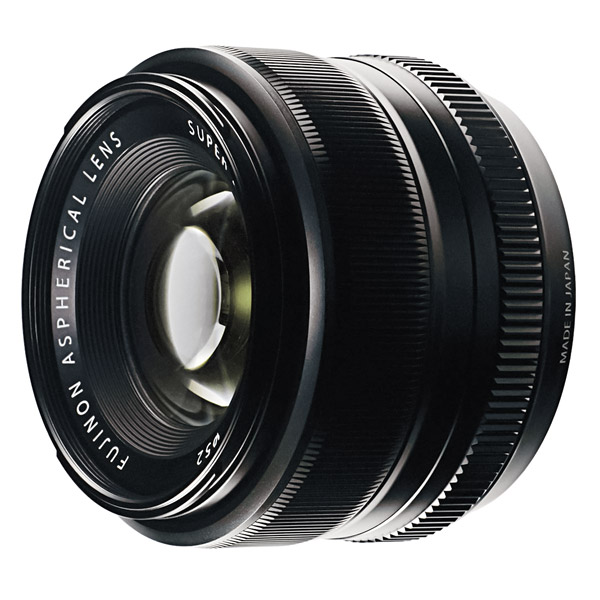 | Fujifilm XF 35mm f/1.4 R Pros: High Brightness, delicate colors, bokeh creamy and delicate, high sharpness to TA, metal construction (including the hood) Cons: It lacks a little 'character as indeed all optical digital era, to TA separation between subject and background in focus sometimes a bit' unnatural Opinion: We are talking about a 50mm equivalent, then the normal par excellence. Quality of materials of very good construction, optics fact is all metal, including hood, mur maintaining a low weight. The lens itself is very good, very sharp, very bright, with a very creamy bokeh. From my point of view what he lacks is a bit 'of nature ... But this is a common problem of most modern optical born for digital should aim a high quality but neutral to churn files can be processed in post production . However, the results are: connected with any fuji allows to obtain also the jpeg excellent. Definitely one of the best "50mm" modern outstanding ... a flagship in Fujifilm scene. sent on December 19, 2014 |
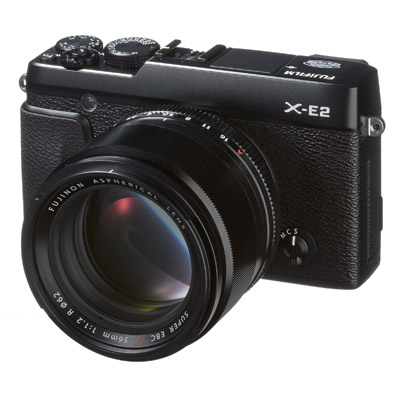 | Fujifilm X-E2 Pros: Aesthetics fantastic, the best electronic viewfinder pentaprism, white balance, ergonomics, weight and size to a minimum, control, sensor, image quality, ISO estate, raw full-bodied and full of information Cons: Battery life ridiculous, one SD slot, focus sometimes inaccurate in low light conditions, raw heavy and unable to save compressed lossless Opinion: I begin by saying that the X-E2 is not a camera defect-free, but has a domineering charm. The sights of this x-e2 is great: being electronically allows to photograph the dark as it is light and lets you see the shot before running it. This allows for perfectly exposed pictures. No ghosting or slowdowns. In very poor lighting conditions (boundary conditions ...) if you have to focus on the detail autofocus can be inaccurate and difficult. rnIl white balance is very good, better than most new SLR FF. With 4 buttons fn everything is within reach without taking your eye from the viewfinder and manage the camera becomes easy. The sensor trans-x is very good, however the lack of low-pass filter as well as the sharpness brings out the noise on time. A 3200 iso is nonetheless inaudible to manifest itself, in a completely acceptable, by iso 4000 starts to be a little 'longer present but always within the limits. The noise isstill very "analog" and also ISO 6400 is not particularly troublesome. The main drawbacks are the ridiculous battery life (on average 300 shots), make it impossible to save in raw lossless compressed (a raf weighs 34 mb ...) and of course the autofocus does not always rise to the occasion more criticism. RNLA real big difference between the system and the fuji reflex and that with the first photograph must know really well and have a keen sense of composition. This is because a fuji forgives less. SLRs have too many automatic and in one way or another they take home the shot. If overnight SLRs disappeared I think that professionals would remain 1/100 of those who are there. But behind clothes retro flavor there is also a lot of technology. Ergonomics, size and weight to a minimum, make it an alternative for a professional. sent on December 19, 2014 |
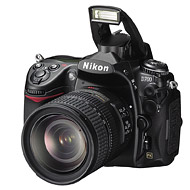 | Nikon D700 Pros: Quality from all points of view, sensor, imperceptible noise at high ISO, ergonomics, number of pixels, autofocus impeccable and precise Cons: Lacks a slot for SD secondary backup, battery life a bit 'poor, Opinion: Despite the passage of six years after its release the D700 remains an example for the next generation of cameras. Does not feel the passage of time and, thanks to the amateur market which fortunately do not understand a tube of photography, they can also find specimens to 900 euro with yes and no few thousand shots. Yeah, because a camera such as it exits a D800 becomes obsolete ... rnAvendo the same sensor but costing half of D3, the D700 has ousted the Flagship ruining business to Nikon: for this reason nowadays there are cameras like the D600 , neither fish nor fowl ... now the house is fine giallonera careful not to give again in the foot! Moreover, the D700 is fine for all sectors photographic (with battery grip increases the battery life and the burst). In terms of photography bed is probably one of the best choices regarding the number of pixels (in my opinion the right), the superb quality of the images when combined with optical pro, weight (not excessive as quellor un'ammiraglia), the battery life (after a 12-hour service remains almost half) but especially for holding as high iso: 6400 is barely noticeable and sometimes not even bring it in post-production being so fina almost film not bother when present. I work with two D700 and exclusively fixed targets: through apertures such as 1.4 or 1.8 combined with the D700 I can safely work at night without flash. rnQuello of which, especially for photography bed, you miss is the double slot, one CF and one SD: unfortunately marriages are not repeated and to rely on a back up is not a trivial matter. rnChe else to say? A car far from obsolete, but rather who has not yet been passed by the majority of the newcomers. This how it was conceived: the right number of pixels, an efficient autofocus system, a noise resistance impressive, a rugged and ergonomic, all buttons very accessible to the right place. rnMolti consider superata because it does not have the video apparatus, the wi-fi, gps, live view, the display tilting ... to me this is nothing but a good thing !! I hate all these frills in a camera. These all serve except to take pictures. sent on January 13, 2014 |
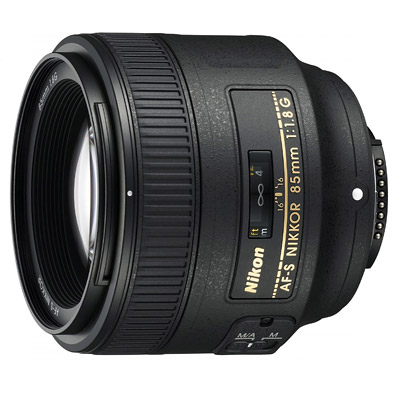 | Nikon AF-S 85mm f/1.8 G Pros: Exemplary clarity at all apertures, fuzzy creamy among the best, sublime colors, MAF fast and precise dimensions and minimum weight for the type of optical Cons: Definitely the minimum distance of focus: 80cm! Opinion: It's not my favorite focal length but the lens is. This 85mm has very little to envy the big brother 1.4, taking into account that costs less than half the coast and in used almost 1/3. The sharpness is impressive for TA to remain as it closes the diaphragm, MAF fast and accurate that does not miss a beat, sensational colors, creamy blurred between the absolute best bokeh fabulous, small footprint to a minimum to be a mediotele from definitely professional quality. View of luxury at an affordable price. Also on DX performs well but gets a little 'lunghini with its 127.5 mm effective. The only drawback minimum distance of focus: with its 80cm would preclude many situations more close-ups of details, close-ups, especially etc.rnConsigliatissimo on FX. sent on January 11, 2014 |
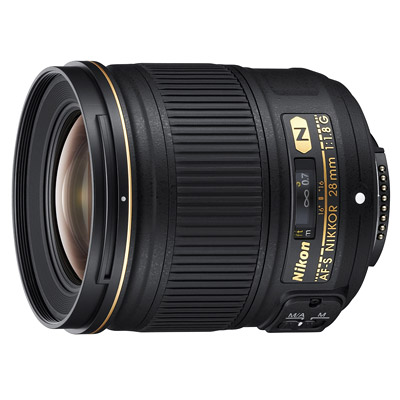 | Nikon AF-S 28mm f/1.8 G Pros: Sharpness at all apertures, optical design with cutting-edge treatment to the nanocrystals and aspherical lenses, light weight compared to other wide-angle fixed last generation, no distortion (!) MAF exceptionally fast and accurate Cons: MAF ring tends to be a little 'slack ... Opinion: 6egrave, much less from all points of view ...) sent on January 11, 2014 |
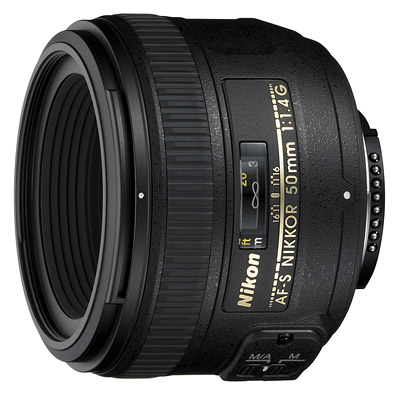 | Nikon AF-S 50mm f/1.4 G Pros: Incredible brightness at a ridiculous price, good sharpness already at 1.4, light, dreamy bokeh, small and compact Cons: Autofocus a bit 'slow but precise: the optic in question is not designed for sports photography or action, is a glass for a photograph brooding, intimate, even in the moonlight. However, the optics can be improved given all the technology of today. You are advised to deal with perspective with certain limitations. Opinion: My favorite focal length to which he dedicated a myriad of Nikon lenses but without having had the time to fully center. When I use the 85mm f1.8G feel a spell, with this 50mm f1.4 does not. A clean and simple optical scheme (ED lenses or no treatment to Nanocrystals, nor aspherical lenses), but no less effective. We must first understand this objective to appreciate it as it should. A 50mm f1.4 is not used for sports photography or action shots but for quieter, more reasoned. It is useless to buy a fixed considering this as a "handyman" ... The autofocus slower but offers more precision because this lens needs to know to work at night and no flash, and no one has ever given me problems in the photograph bed. Many complain about a certain softness to 1.4: as I said it is not the 85mm f1.8G. A 1.4 has a good sharpness, and anyway "sharpness" has never been synonymous with quality in photography. What is certain is that if one buys a lens ofthe genre for photographing sunsets or cats that sleep is obviously looking for a spectacular sharpness to give meaning to a photograph trivial. At full aperture, and ISO 6400 you can work in the moonlight without artificial lights. The bokeh is spectacular, the materials do not even look at them because they do not account for the quality of the lens: brilliant optics best a bit 'plasticky crap metal or tropical conditions? At the professional level optics gets along very well. It is designed to report a more reasoned, more sophisticated, exploiting the twilight glow, certainly not to immortalize ski racing. It also demonstrates the bokeh: delicate and dreamy, suitable sensuality of evening lights. Of course, the Nikon can do better when I use it I feel certain limitations such as slow auto focus or sharpness is not excessive at RT, however insignificant things. What amazes me is the lack of a 50mm "final" home Nikon ... The 1 .4 G has something that 1 .8 G does not have and vice versa, malways seems to be missing something ... For value for money has no equal. sent on January 03, 2014 |
 JuzaPhoto contains affiliate links from Amazon and Ebay and JuzaPhoto earn a commission in case of purchase through affiliate links.
JuzaPhoto contains affiliate links from Amazon and Ebay and JuzaPhoto earn a commission in case of purchase through affiliate links.May Beauty Be Everywhere Around Me